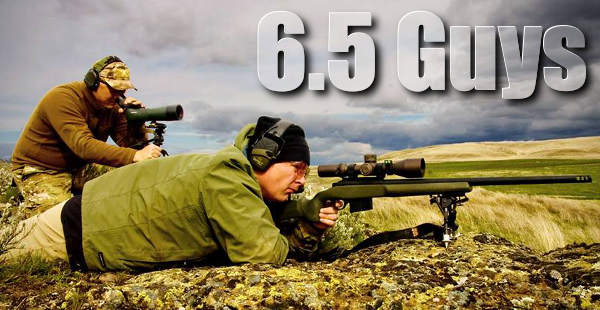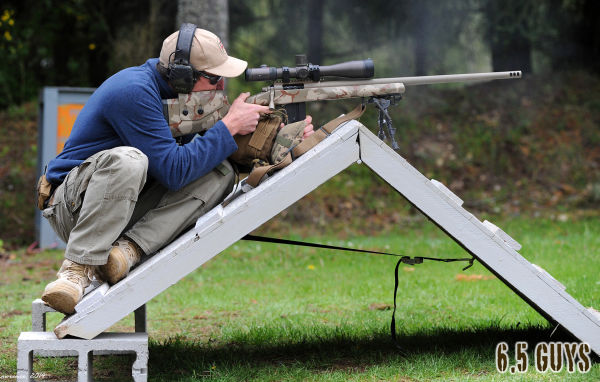Sunday Gunday: Wounded Warrior, SGT Robert Evans, Earns Distinguished Rifleman Badge

At the 2013 Western CMP Games, SGT Robert Evans attained what many shooters seek their entire shooting careers — a Distinguished Rifleman Badge. Evans earned his DR badge with just one hand, after losing his right hand while serving in Iraq with the U.S. Army.
CLICK HERE to Read Full Story on CMP Website
Report based on story by Ashley Brugnone, CMP Writer/Editor
 SGT Robert Evans: Defying the Odds, Single-Handedly
SGT Robert Evans: Defying the Odds, Single-Handedly
AFter joining the Army in 2003, SGT Robert Evans served two tours in Iraq, suffering a spinal injury on the first tour. On his second tour, his life changed forever. On May 31, 2007, Evans was commanding a Bradley Fighting Vehicle in Iraq. As the Bradley drove under an old Fedayeen guard shack, an IED on top of the guard shack detonated while Evans was reaching out of the turret. The blast amputated Robert’s right hand at the wrist.
Even as a young boy, Evans had always enjoyed shooting. He vowed to stay involved with the sport despite his injury: “I couldn’t give up shooting after I lost my hand. It’s always been too important to me,” he said. “No matter what is going on in my life, when the sights are aligned and the hammer is about to fall, nothing in the world matters at that second. It’s my nirvana.”
Evans worked his way back into the sport by starting in F-Class. The position allowed him to hold hard and pull the trigger, while also being able to use his optics. Then he got involved with J.J. O’Shea’s M1 for VETS Project. The project helps transition wounded combat veterans back into the world of shooting, with equipment arrangements, position training and mental preparations.

Working with the M1 for Vets group, Evans started shooting again. But there were challenges: “The first time I shot after my amputation, it was very frustrating,” he said. “I couldn’t hold still, and shooting left-handed was so foreign.” Being extremely right-eye dominant his entire life, the loss of his right hand caused him to relearn many things, including how to shoot. Learning how to reload and adjust for wind while slung up became a pain for Evans….

In 2008, after several months and rigorous hours of dry firing, Evans found himself crossing the threshold of Camp Perry — a dream he had waited to fulfill his entire life. He scored around 50 points standing, out of 100, on his first trip. Though not bad for someone with an amputation, that wasn’t enough for Evans. He wanted to become a Distinguished Rifleman.
SGT Evans during Team Match at 2013 CMP Western Games.

He began to realize his dream as he earned his first 10 points (towards Distinguished) at Camp Perry in 2012. It took him 15 months to LEG out. His next 6 points came at the 2013 Eastern Games in Camp Butner, NC, followed by 10 more points at the 2013 National Matches. There, hoping to “bronze out,” he managed to one-up himself to actually earn a silver medal.
Then came the 2013 Western Games at the Ben Avery Shooting Facility in Phoenix, AZ. Never giving up hope and remembering his long journey from the hospital bed to the firing line, he received his final 8 points. SGT Robert Evans had become a Distinguished Rifleman.

“There was a lot of pressure, speculation and competition as to who would be the first Combat Wounded Veteran to ‘go Distinguished’ within M1 for VETS,” he said. “I’m very proud to have earned my badge, but more importantly, I hope that more wounded veterans will realize that it is within their grasp. It’s not an impossibility anymore. I hope it motivates everybody to train a little harder and hold a bit tighter – not just wounded veterans. If I can do it, anybody can.”
Posted Courtesy of the Civilian Marksmanship Program, www.TheCMP.org
Author: Ashley Brugnone, CMP Writer/Editor
Commentary by GS Arizona
Robert Evans’ inspirational effort is a fresh reminder of the value of marksmanship in creating a focused challenge and reward that can help our wounded warriors regain the confidence and motivation to succeed in all aspects of life.Robert’s effort is very reminiscent of that of Karoly Takacs, a Hungarian pistol competitor who lost his right hand in a grenade accident in World War II. Determined to overcome the injury, Takacs taught himself to shoot left-handed after the war and earned gold medals in the 1948 and 1952 Olympic Games. Robert brings that Old World grit and determination into the modern day and into the context of our nation’s most historic and cherished award for marksmanship. Robert’s Distinguished badge will shine brightly as a beacon to those who face challenges in their lives and can find a path to renewal in the brotherhood of marksmen. We salute him for his efforts and for the inspiration he brings to us all.
Editor’s Note: GS Arizona is a Distinguished Rifleman, Distinguished Pistol Shot, Distinguished Smallbore Rifleman (NRA) and a dedicated student of shooting history.
A Special Message from SGT Evans
SGT Evans wanted to thank all those who were instrumental in helping him achieve his goal of “going distinguished”. has a long list of individuals to whom he owes his successes.
“I think it’s necessary to let our fellow competitors and enthusiasts know how important they’ve been to me and the rest of the M1 for VETS shooters. They are the ones who keep us going and make our world go round,” he said. “Without all of the support from the shooting community, organizations and businesses that have donated to M1 for VETS, it never would have happened. Thank you all so very much!”
“I’d really like to thank the CMP and everyone who has helped me. That’s the real reason I went Distinguished,” he said. “M1 for VETS is a fantastic organization, and I really can’t thank them enough for what they do. No matter where my shooting career takes me, I’ll always be thankful to them for teaching, mentoring and accepting me. They are a fantastic group of guys and the reason I had the opportunity to even try. I’d also like to thank John and May Marx … and Dick Whiting.”

SGT Evans and his wife Karen after a Washington meeting with Senators Harry Reid and John Ensign.
“My mother, father and grandparents have always been there for me and are a constant source of encouragement,” he said. “And last, but certainly not least, my loving wife, Karen. She supports me no matter what I do and backs me up entirely. She’s my world and I can’t thank her enough for her support and loyalty. I love you, Karen.”

























